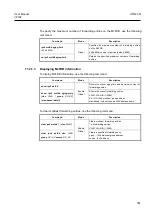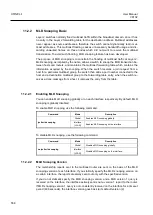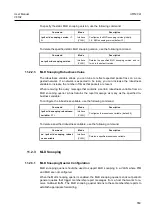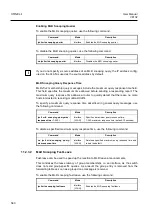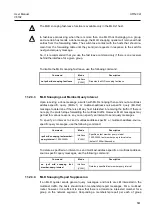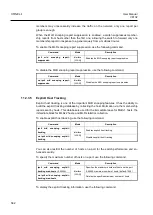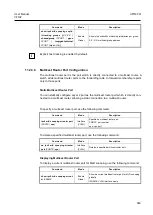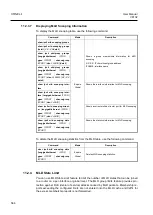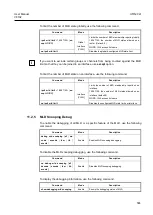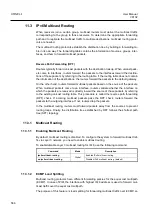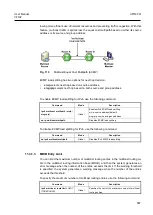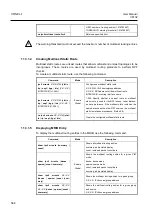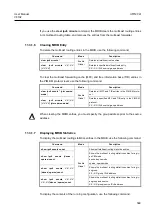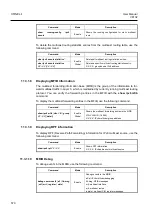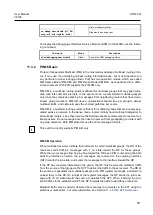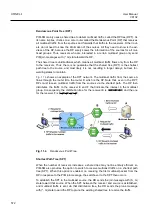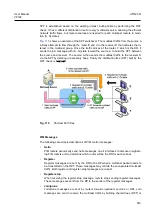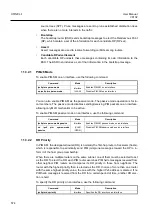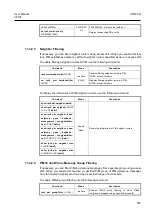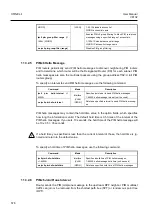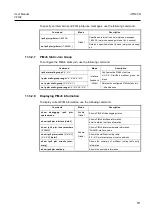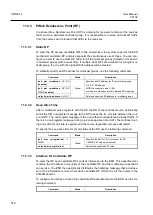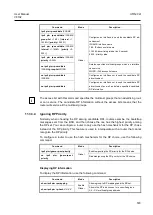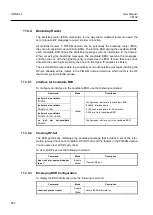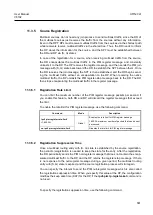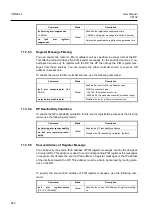
User Manual
UMN:CLI
V8102
571
stats: multicast statistics
no debug nsm mcast6
{
all
|
fib-
msg
|
mif
|
mrt
|
register
|
stats
}
Disables the debug event.
To display the debugging of Network Service Module (NSM) in the MRIB, use the follow-
ing command.
Command
Mode
Description
show debugging nsm mcast6
Global
Shows the NSM debugging status.
11.3.2
PIMv6 Basic
Protocol Independent Multicast (PIM) is the most widely deployed multicast routing proto-
col. It may use the underlying unicast routing information base, but is not dependent on
any particular unicast routing protocol. PIM has two operation modes, which are called
PIM Sparse Mode (PIM-SM) and PIM Dense Mode (PIM-DM), each optimized for a differ-
ent environment. IPv6 PIM supports the PIM-SM only.
PIM-SM is a multicast routing protocol efficient for multicast groups that may span wide-
area (and inter-domain) internets. In the sparse mode, routers forward multicast packets
only when they receives explicit join messages from neighboring routers that have down-
stream group members. PIM-SM uses a unidirectional shared tree per group to deliver
multicast traffic, and optionally uses the shortest path tree per source.
PIM-DM is a multicast routing protocol efficient for multicast groups that are densely pop-
ulated across a network. In the dense mode, routers initially flood multicast datagrams to
all multicast routers, since they assume that all downstream systems want to receive mul-
ticast packets. Prune messages are then used to prevent from propagating to routers with
no group members. Both PIM protocols use the same message formats.
This switch currently supports PIM-SM only.
PIM-SM Operation
When multicast receivers indicate their interests in certain multicast groups, the DR of the
receivers sends PIM join messages with (*, G) state toward the RP for those groups.
While the join messages flow hop-by-hop toward the RP, each PIM router along the path
adds the interface on which the join messages are received to the outgoing interface
(OIF) list with the join state, and sends the messages to the interface toward the RP.
If the RP has receivers interested in the group, the RP must receive the multicast traffic
from the source of that group via the SPT to deliver the traffic to those receiver. The DR of
the source encapsulates the multicast packets in the PIM register messages, and starts to
unicast them to the RP. On receipt of the register messages, the RP sends the join mes-
sage with (S, G) state toward the source to establish the SPT. When receiving the mul-
ticast traffic via the established SPT, the RP forwards the traffic toward those receivers.
Multicast traffic may be directly delivered from sources to receivers via the SPT using the
switchover mechanism. For more information, see Section
i
Содержание V8102
Страница 1: ...1 V8102 GPON OLT system User Manual...
Страница 158: ...UMN CLI User Manual V8102 158 When you use the no snmp command all configurations of SNMP will be lost...
Страница 427: ...User Manual UMN CLI V8102 427 show debugging dhcp Enable Global Shows the debugging information of DHCP...
Страница 797: ...User Manual UMN CLI V8102 797 show onu gsp status config ONU_ID tag list number TAG_NAME tag name...

